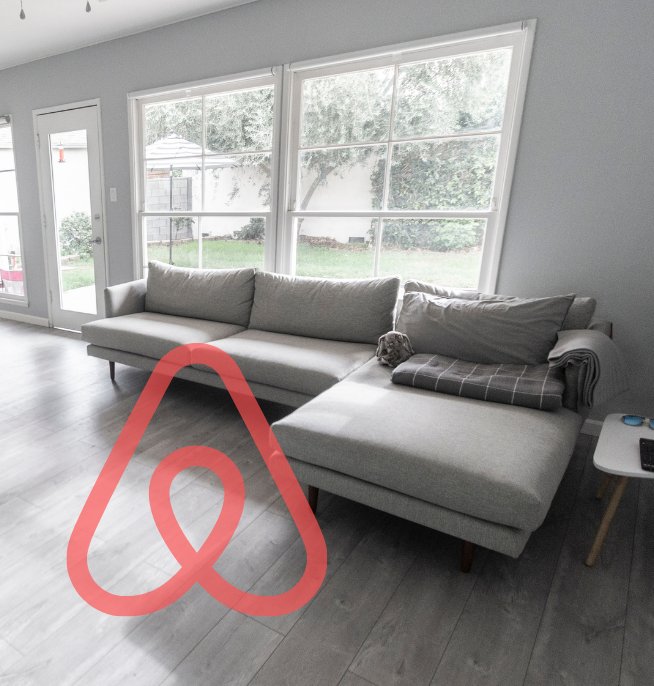Truth bomb time. You’ll know from my podcast “the #1 mistake business owners make” that nailing your niche is a sure fire way to make more sales and charge more for your services. Here’s the rub, most business owners never get potential customers to say “yes” never mind “hell yes.” Have you ever put a sales page or campaign out there and heard the crickets? Quite often our sales efforts and sales pages don’t quite get the results we expect, I want to change that for you.
Finding a profitable niche that's right for you
The thing is, you’ve probably been tripped up or gotten stuck with finding the right niche for you that’s profitable and figuring out your ideal customer persona so you can leverage these foundation blocks really to help you to build a successful business. To reiterate : knowing you who serve, you’ll know how to speak to your audience; providing content that resonates and offers that will be too good to pass up.
When defining a niche that’s right for you and developing a persona for your ideal customer digging in and really getting into the detail is going to ensure you move forward and I’m going to show you three ways that nailing these two steps is going to make selling a breeze and really smash through any sales struggles you’ve got.
Quick steps to nail your niche
First, I want to walk you through quick steps to nail your niche and your ideal customer avatar if you haven’t done this already. If you join the Facebook group I’ve got some detailed training, notes and a workbook download with a highly-effective 4 step process for you to follow. You’re going to need to put some work in, put your pen to paper but it’ll be worth it. You’ll sell more and charge more which will launch you into the next level of your business.
I understand that for so long you might have resisted choosing a niche, I get it and especially in times of scarcity this is even harder to get on board with. You’re worried that you’re leaving money on the table or that having a niche will make your market too small to support your goals. Let’s squash those misconceptions right now and get to work. Because, identifying your niche and working on your ideal customer avatar is going to make sure your ideal client fully understands why your product or service is a no-brainer for them and it’s going to position yourself as an expert.
These two little things are the small hinges that’ll swing big doors for you. It helps you know exactly who you’re talking to and what you can offer them so that they’ll actually part with their hard earned cash. I’m not going to go into a huge amount of detail here as this is covered in the free training that I’ve mentioned.
How nailing your niche will explode your sales
So how is nailing your niche and getting hyper-clear on your ideal customer going to help you ease your sales struggles and take your business to the next level?
Other than the ways I’ve mentioned already (positioning yourself as an expert and giving your ideal customers a reason to see why your product or service is a no brainer) here we go.
1) It helps you craft a value proposition statement
I want you to be able to succinctly say that "I do X for Y audience through Z". It’s a formula.
I help women with their confidence after divorce through mindset work
I help creative agencies break the feast and famine cycle by working with them to implement a sales and marketing system to get sales on demand.
I help physiotherapists grow profitable practices through online marketing.
Teach business owners to leverage the power of branding using Canva
These are examples of value articulation statements, what you might see on a LinkedIn bio or snippet on Facebook etc. Now it’s important to have this ready because before you start creating content, headlines or offers for your ideal customers you need to have that core value articulated. Who you help, the result and how, the one clear outcome.
If you’re saying 'no, no no' and feeling some resistance right now I get it. But as a business owner, entrepreneur or creator you need to figure out what works really well for you and make sure that you can repeat that at scale. I don’t want you to feel like you’re stuck in a pigeon hole but as one niche works and you build up case studies, reviews and testimonials stick with it until you do and then you can spread your wings or scale outwards.
2) Create emotionally hooking leads
You’re now able to create an emotionally hooking lead. And content that sells your story, resonates with your audience and create a truly compelling, irresistible offer.
Start with creating your utterly irresistible offer, having something that your audience wants, needs and will pay for. Around that you can then create content that’s compelling and tasty enough to get them to know-like-trust you after they’ve been hooked in with an emotionally captivating idea, mechanism or headline that you’ve strategically placed in front of your ideal customer.
(See Content That Sells Like Hot Pizza for recipes to create tasty content!)
Now these are the things that come next but you’ve got to go with me here, you can’t move forward with any certainty and expect results without getting clear on your niche and who your ideal customer is first.
You have to get these two things right before starting to craft your offer, creating your sales message and the hooks to get your ideal customers to your front door.
3) Create sales pages that rock
Nailing your niche and your ICA will now help you put together sales pages and sales content that’s so effective you’ll wonder how on earth you ever made things work before. I’m going to talk you through some quick steps to creating a sales page using the work you’ve done.
I’ve talked about landing pages in one of my YouTube videos, if you’re a business owner you’ve got sales page maybe several and these are important. They’re probably one of the biggest tools in your marketing collateral war chest. You need to do everything you can to make them effective and make them convert. UX and UI designers around the world get paid tidy fortunes to make sales pages that converts so this really is a big deal.
Whether you have a sales page or you are creating one for an offer, I hope this will really help you make sure your’s is a powerful as it can be. Ready to turn your sales page into gold? Here’s the framework, first I want you to sketch out the WWWH framework (I’ve talked about this before in the episode “Stop writing sales copy that sucks”.
Just a reminder about this utterly earth shattering framework: Who, Why, What, How.
Let me summarise this for you quickly and then we’ll dig in.
Who is your offer for (remember working hard to build the ideal customer profile? You'll be using the fruits of your labour here)
Why you’ve created this product or service or to put it another way, why it’s important to your ideal customer because you know what their specific struggles and pains are
What the transformation is or the end result for your ideal customer
How to get the offer, your call to action.
Who are you speaking to?
The goal is for your ideal customer to leave your sales page feeling like you’ve really spoken to them, you’ve really understood their specific problems and challenges so they’ll want to sign up, buy, get in touch or whatever your call to action maybe. By the way, on a sales page I highly recommend having your Call to Action sprinkled around your sales page several times and there’s an important reason for this.
Sales pages are tough, and like I said people get paid buckets to do this as it’s a craft and a skill. I hope these ideas and insights will help you. And then there’s creating content that sells like hot pizza, all that is covered in detail in my book which you can get here.
Your sales page has a lot of work to, it’s got to explain what your offer is, deliver the WWWH framework and it’s also got to cover objections, answer questions and build up credibility in the eye of your ideal customer. You’re helping them go on a little journey and feel certain that this product or service is what they need.
I’ve run a design and digital agency for a long time creating websites for huge brands, we did a lot of UX testing for retails and online businesses. So here’s a little insight for you into the types of people that visit your sales page. By the way, this is something I’ve personally struggled with for a long time - it’s easy to assume people are like you so you might not feel comfortable with long copy, I know I don’t read long form copy but that doesn’t mean other people don’t. Try put your personal bias aside. You’ll find that some your audience can be popped into various different categories depending on how they consume your content.
Impatient buyers. These people already know they’ll buy and they want it now - they’re your engaged audience who are already fans and they’ve come to get what you’ve got.
Skimmers. These types of visitors will scan your sales page maybe stopping to read what they think is relevant to them and they’ll run their eyes over headlines or highlighted words and sections. Steve Krug in the book “Don’t make me think” talks about the majority of web users as scanning web pages, not reading them.
Methodical readers. This segment of your audience will read every word, maybe more than once and they’ll really dig in before deciding to buy.
Now you understand the framework of a sales page and the types of people in your audience, you’ve got to make sure your sales page has something for all of them. As you’re making long form copy for those methodical readers and you’ve got bullets and heading for your scanners, you have to place your call action in several places. Your call to action which might be sign up, subscribe, buy now, request a call, it needs to be close to the top for your dedicated impatient buyers; repeated once or twice down the page for your skim readers and placed at the bottom again for your methodical readers who’ve gone all the way to the bottom (because yes, people do scroll).
In the ‘how’ you want to make it super easy for people to do business with you, the call to action has to be really clear. And don’t forget in that ‘how’ you also want to remove any friction for your potential customer so think about having a guarantee that would take any risk of them and make it a no-brainer.
When you’re creating your content for your sales page, you want to say 'hello reader or visitor this is who this offer is ideal for'. You want them to either say no, that’s not me or yes you’ve read my mind, you get me. This is probably the most important reason why you’ve gone into so much detail working on your ideal customer avatar, you want your readers to react emotionally.
You want your reader to feel confident that they’re in the right place so they’ll stage engaged with your sales pages and eventually take you up on your offer.
You can even start a page like this "before I tell you all about this product or service, let me tell you who this is really for…" So if I’m talking to my audience I'll speak directly to owners of small and medium ethical businesses who are tired of the spaghetti strategies they’ve used to get their business to this stage and they’re ready take their sales and marketing to the next level to grow their business and quit the job they own. You can actually call them out too.
You really want to share their main desires, wants and needs in this section. This really is your chance to speak directly to your ideal person. Have a look at your sales page is it clear who this is an ideal fit for? If not then you’re trying to sell to everyone and your page isn’t going to be very effective.
Why should they listen?
Why is the next thing that’s important. I like to either talk about why this product tor service was created in the first place, often there’s a backstory which personifies a problem that has been solved leading to the product. With consultancy or service based businesses, this usually does the trick. You might also want to talk about why your offer is important to your customer, you need to take them on a little journey to give a glimpse of what’s possible when this challenge, issue or problem they have has been solved. You’re showing the possibility of where they are now and where they can get to or what the end result will be with your offer.
The why is what often creates a sense of internal urgency with your ideal customer, I talk about this in my Offer Fix course. Creating a sense of internal urgency helps your ideal customer not only see why they need this offer but why they need it right now. If it’s easier for you, write down a pros and cons list. The pros of having your offer and the cons of not having it, whatever format you need to brain storm and get this down on paper. You want to get some 'fomo' going but doing it with authenticity.
What's in it for them?
What is the offer and what will your customer feel like when they’ve experienced your service, solution or they’ve bought your product? Revisit your sales page and have a look at whether or not you’re directly addressing what the end result will be. You can often say what it is and how it helps in that format, as simple as that.
How do they do business with you?
Then lastly you can develop your call to action. How your ideal customer can get the offer and how you can make a guarantee that’s so compelling they can’t say no. Knowing your ideal customer will really help you understand what might make them say no in order for you to overcome that in the guarantee. And remember you want to make it easy as possible for them to do business with you - that’s why Amazon is so successful!
You’ve now learned how nailing your niche and putting the time in to develop your ideal customer profile is going to help you nail a super effective sales page and end your sales struggles.
Make sure you put the work and effort into it, this will be so worth it. And remember to have fun, if you’re not having fun how do you think your audience will feel?



